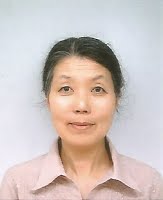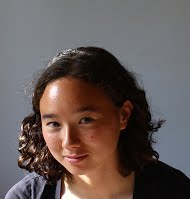The Networked Digital Library of Theses and Dissertations (NDLTD) international consortium is pleased to announce this year's award winners. The awards recognize students who have written exemplary electronic theses and dissertations (ETDs) as well as leaders who have helped to promote ETD programs. Winners have demonstrated new dimensions of scholarship being explored by individuals who have made significant contributions to the worldwide ETD movement. The Innovative ETD Award recognizes student efforts to transform the genre of the print dissertation through the use of innovative software to create cutting edge ETDs. Use of renderings, photos, video and other multimedia objects that are included in the electronic document were considered as part of the innovation of the work. Criteria for consideration of the awards are available online. The awards will be presented at the ETD 2014 Symposium, to be held July 23 - 25, 2014 at the University of Leicester in the UK. Innovative ETD Award Each winner receives $1,000 and is eligible to receive an additional $500 in travel scholarship funding to attend the ETD Symposium. Reiko Goto-Collins / Ph.D. Art – Design and Technology (2012) / Robert Gordon University – Scotland Reiko Goto-Collins’ dissertation “Ecology and Environmental Art in Public Place - Talking Tree: Won't you take a minute and listen to the plight of Nature?” includes the practice-led element which works with multimedia as a crucial and integral part of an experimental methodology. Her PhD study was focused on trees’ physiological response to atmospheric changes photosynthesis. She was thinking about the essential breath of all living things, and how trees contribute to the aesthetics of place while transforming carbon dioxide into the oxygen. Goto-Collins set herself the question of how to create a different relationship between human beings and the natural environment. She explored trees as a context, creating access through multimedia to the transpiration and processes of photosynthesis working with the metaphor of 'breathing'. The premise was deceptively simple: breathing is what we share with nature. If we could experience how trees 'breathe', we would grasp in a direct and sensory way the interdependence between human beings and other living things in the environment. Multimedia features significantly and appropriately at a number of stages and levels within this research, as data gathering and as giving form to experience through the representation of data as sound and sound/image. These are combined in ways that do not remove the research subject from its specific contexts e.g. an oak tree on a particular day in a particular place. This is an important quality of the work within an ecological discourse. The conventions of textual description and analysis of a conventional PhD could not have coped well with the intricate demands of this thesis to offer a sensory experience of the research subject founded in rigorous data gathering methodologies. The doctoral thesis is openly available on the University’s institutional repository, OpenAir @ RGU at the URL: https://openair.rgu.ac.uk/handle/10059/788. Dr. Goto-Collins has sustained a creative inquiry that is concerned with empathic relationship with living things and the environment for over twenty years. She is an artist, a researcher, a designer and author. She is a Principal in the COLLINS & GOTO STUDIO in Glasgow Scotland, where she is recognized for her approach to environmental art and research. In 2014 the studio effort was focused upon photography, video and mapping work related to the Blackwood of Rannoch. To learn more about Goto-Collins’ work, visit her website: http://gotoandcollins.com Samantha Oswald / Master of Architecture (2013) / University of Waterloo – Canada Samantha Oswald’s master’s thesis “Brick: A Story of Construction”, is a creative and complex account of how contemporary construction techniques can be beneficially influenced by the “versatility and poetics” of the timeless material that is brick and the traditional brick-and-mortar system of construction. Ms. Oswald’s research interests are centered on the life cycle of materials and the contribution of this cycle to the making of architecture. During her master's thesis research, her subject of study was clay brick, in which she documented different fabrication processes and then adapted these processes to the design and construction of a small shelter. The work is filled with a myriad of carefully created images that illustrate the process of constructing a Terracott from the ground up. The thesis is in a genre that finds this expression in non-textual form a significant value-added; it is a thesis that describes a lengthy, hands-on process, evolving over time with exposure to changing conditions. The visual components of the thesis have an essential impact and convey the message with impressive force. As well as Ms. Oswald’s adept and revealing photography, her production of an MPEG video is included as a file supplementary to the main body of the thesis in PDF. The video, “Building the Terracott”, is skillfully executed and engaging. Just under 20 minutes in length, it is sufficient to convey strong impressions of the beauty of the hands-on process while inciting an urge to know more about the process, inviting the viewer into the complexities that are found in the textual thesis. The master’s thesis is openly available on the University’s institutional repository, UWSpace, at the URL: https://uwspace.uwaterloo.ca/handle/10012/7760. Presently Ms. Oswald is working at an architecture practice in Switzerland. Part of her work involves expanding her knowledge of prefabricated concrete: the methods, raw materials, and logistics of its production. Independently, she is teaching herself woodworking to learn intuitive and tactile responses to material. She finds this combination of concrete and wood fascinating because the materials are so different, yet both are profoundly embedded in Swiss construction practices. As an immigrant in the country, she finds that studying its materials is a physical and immersive way to better understand its culture. To learn more about Oswald’s work, visit her website: www.tact-rdc.com and her blog: http://www.techneandpoiesis.blogspot.ch John H. Hagen, NDLTD ETD Awards Committee Chair, June 9, 2014. |
|
|




